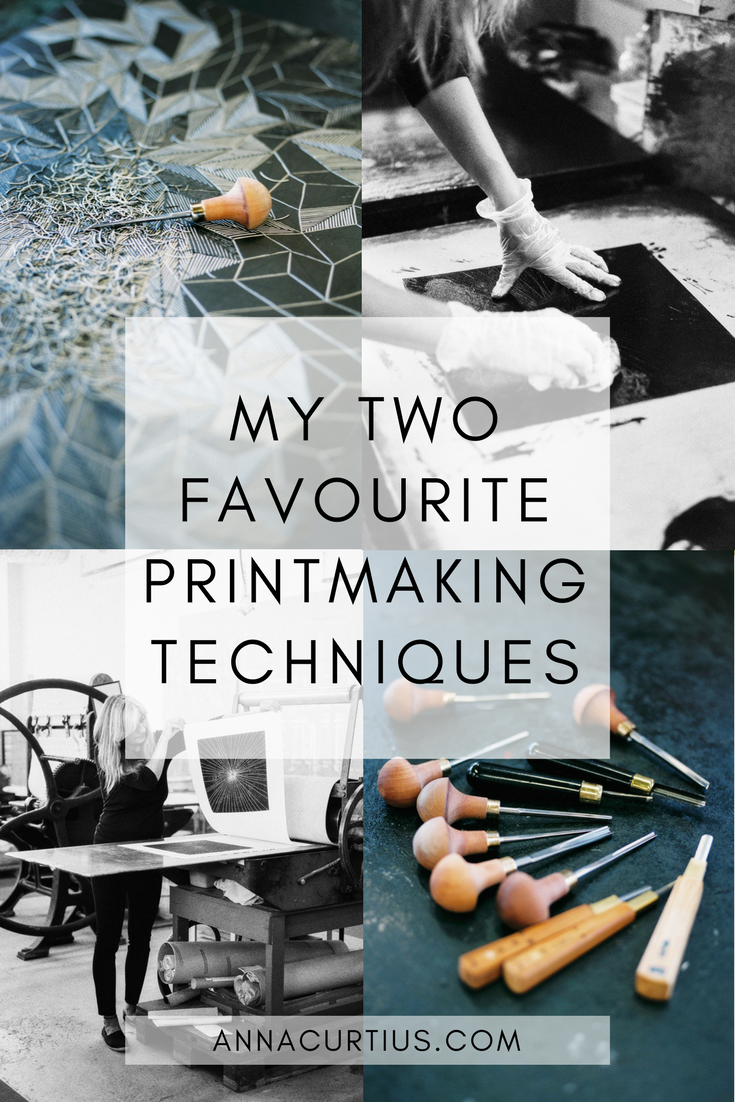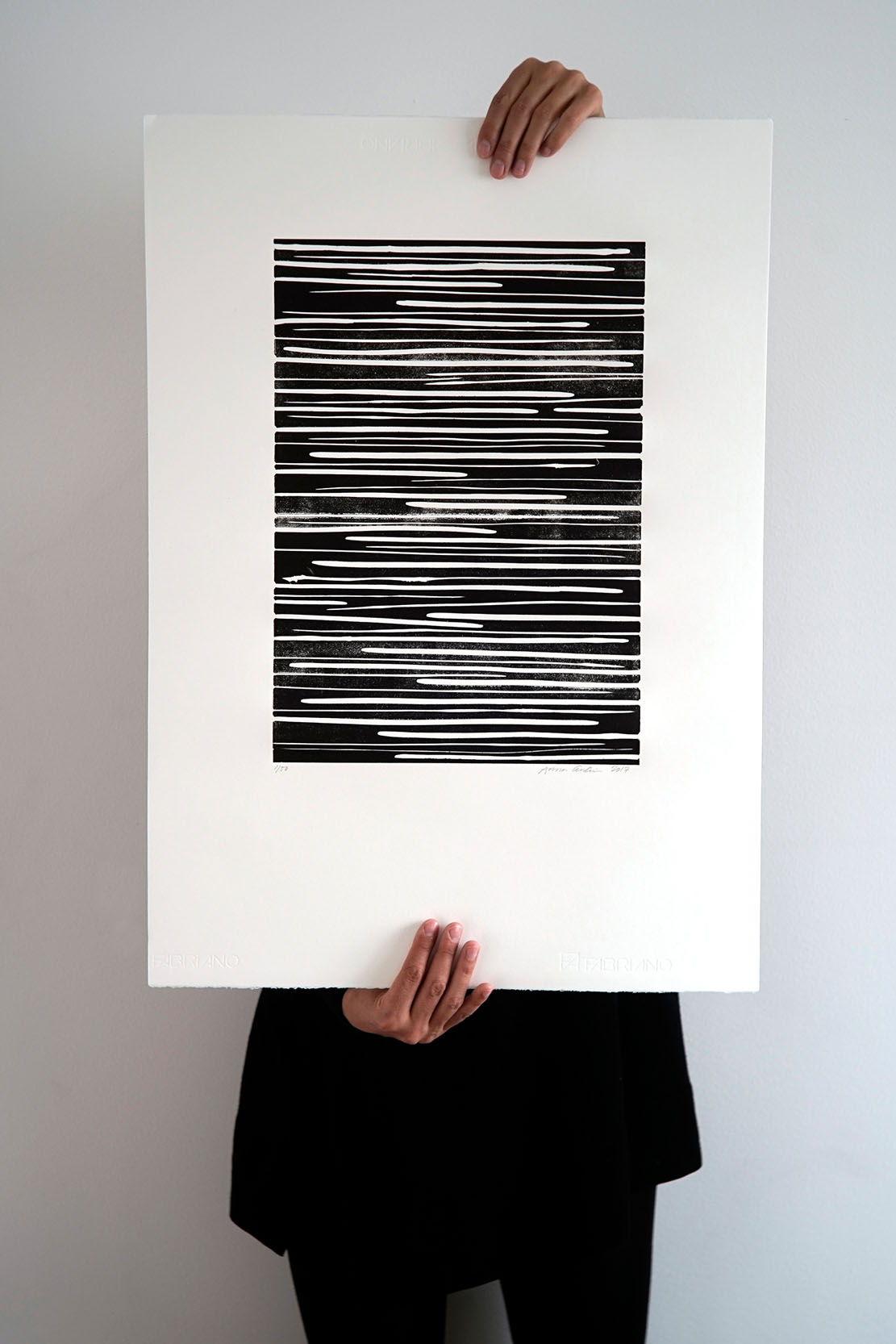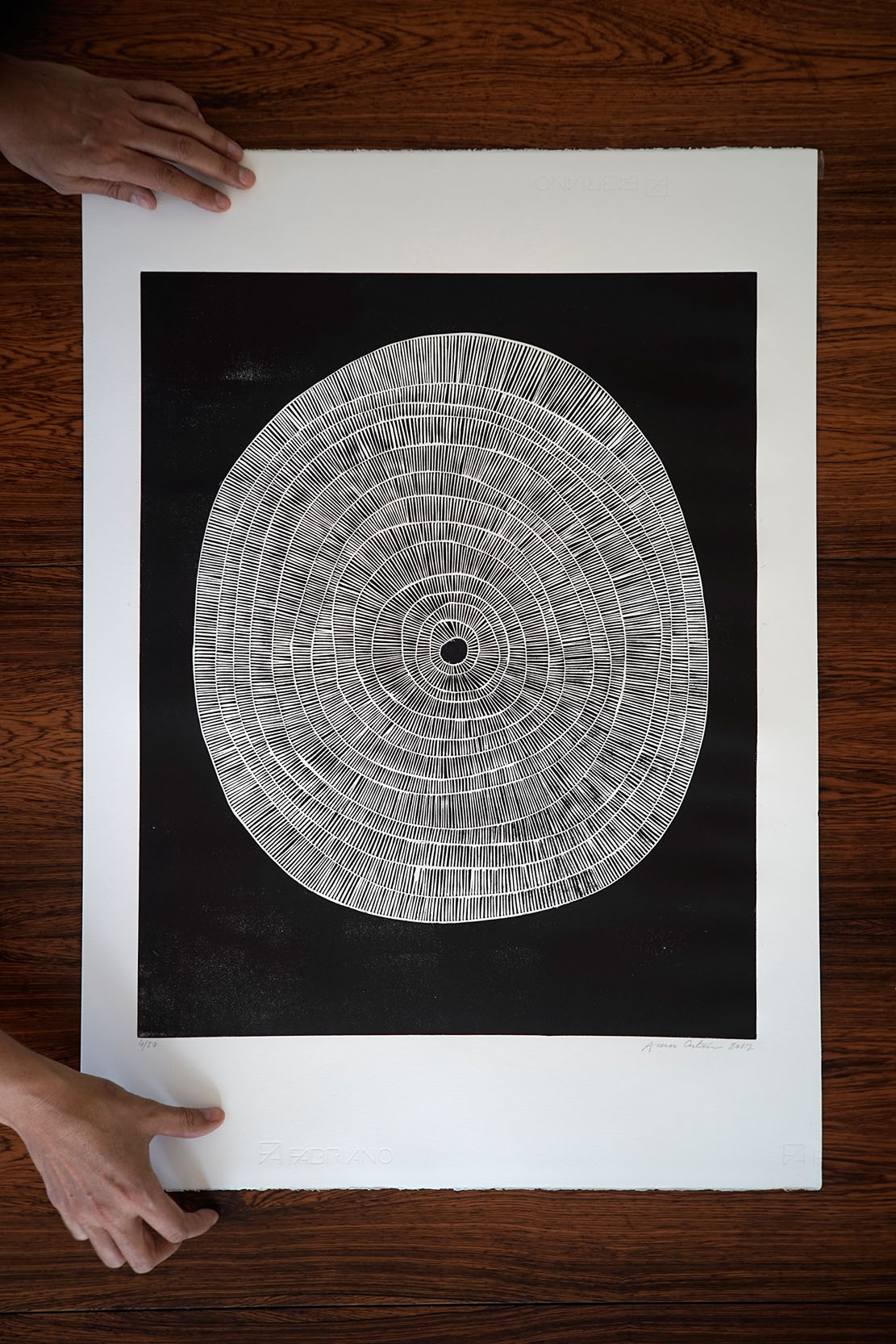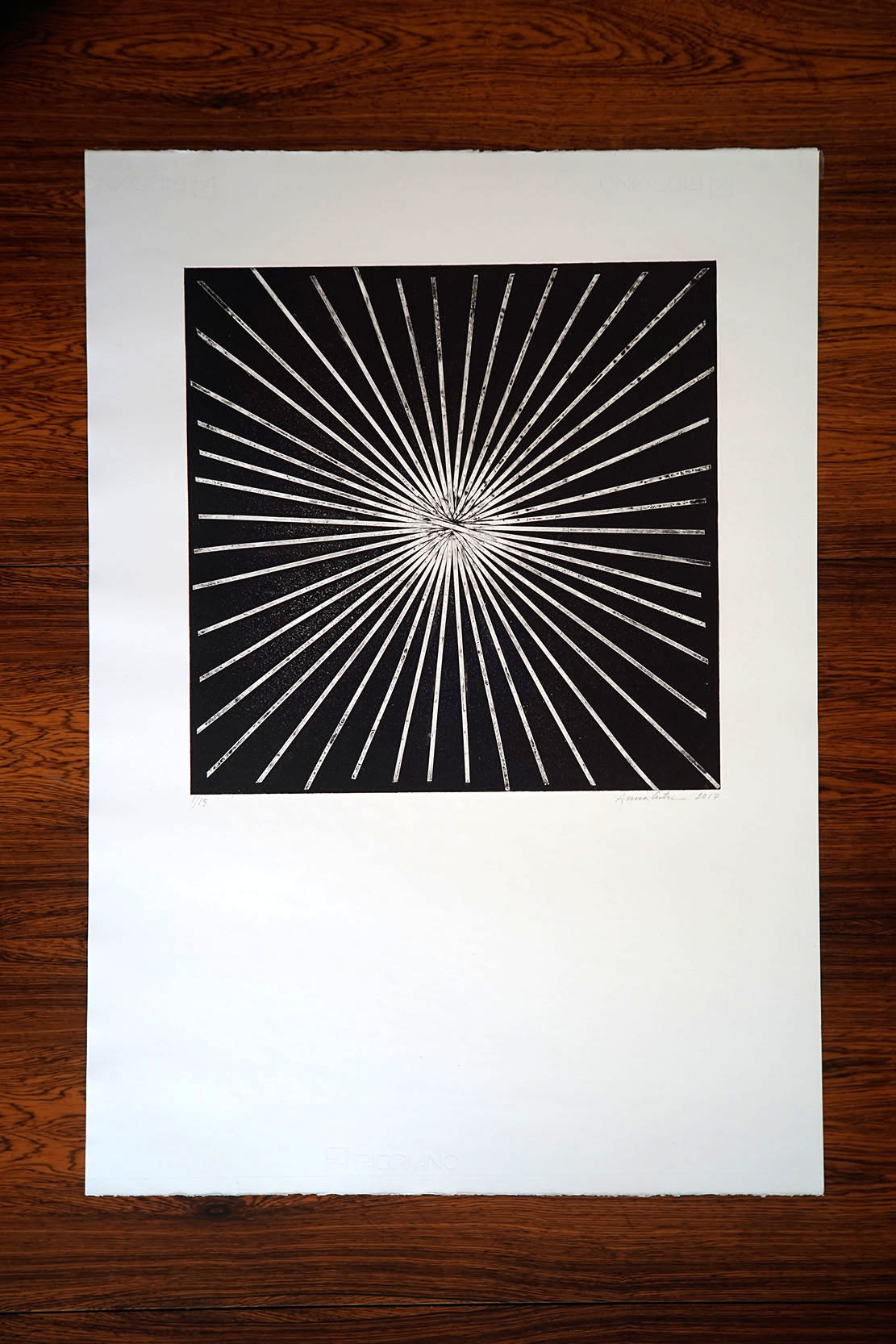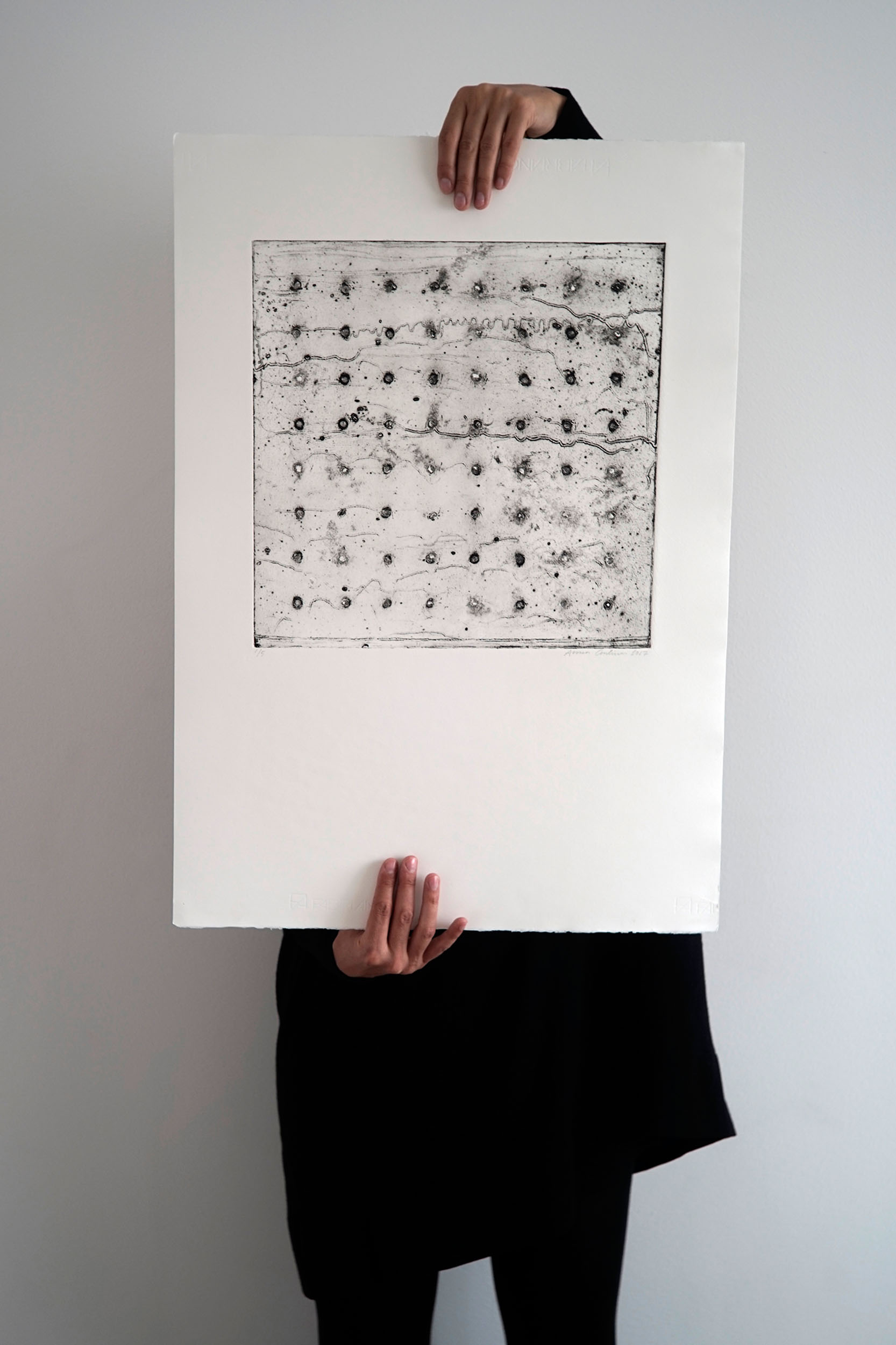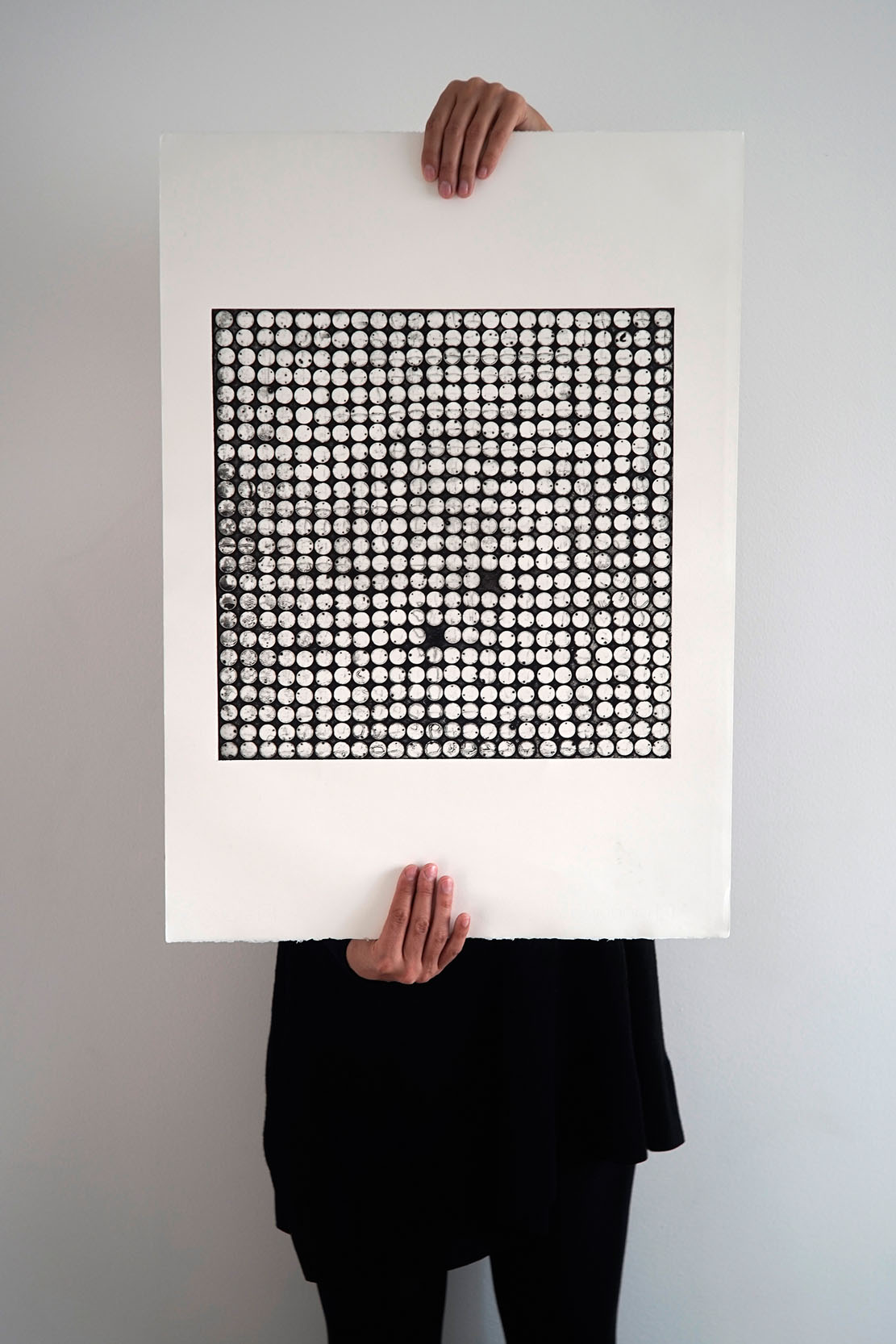MY TWO FAVOURITE PRINTMAKING TECHNIQUES
I am fascinated by printmaking, by making an imprint, a reverse image of one reality that transforms into something else. The two techniques I have used most during the last year are linocut and collagraphy. In this post I will explain what I love about each of them and walk you through the basic steps involved in the creation of a print.
At the end I hope you will feel inspired to try out printmaking too!
LINOCUT
Also called linoleum print, linoprint or block print is a relief print where the image is made by carving out parts of the linoleum sheet. The same technique is used with wood block prints. When ink is applied with a roller, a so called brayer, on the carved sheet the carved out areas won't be touched by the ink and that is how the image is created. The image is transferred to paper either by using a press or by rubbing the paper with either a spoon or a baren, a tool specially designed for the block printing process. A print can be made of one linoleum block, creating an image that is the colour of the paper plus the colour that is put on the block, in my case most often black, and it can also be made of several linoleum blocks creating an image with different colours. A linoleum block is durable and if stored properly can be reproduced many times and is suitable for larger editions of the same print.
In this video you can see the carving process, I'm using a small v-shaped cutter, one of my favourite tools. I also have many other cutters in different shapes and sizes.
I love the graphic, clean and sharp nature of the linocut print. I also enjoy it as a craft and I find the carving very relaxing. Below you can see some of the prints I have made using linocut technique during the last year. As you see I prefer to create art in black and white. Somehow that is how the inspiration and creation of art flows through me.
Discover more about the prints above by clicking on each image or on the button below.
COLLAGRAPH
Collagraphy, also spelled collography, is a printmaking technique that starts with making a collage by glueing different materials to a cardboard plate. The different materials will behave differently once the ink is put on, on shinier surfaces the ink will rub off easily and on more textured materials the ink will stay. The ink also stays at the edges or in the low points of the collage, thus creating the image. When the collage is ready it is protected by putting on one or two layers of shellac, a type of varnish. The plate is inked by either using the intaglio technique, where ink is put on evenly on the plate and then rubbed off or by rolling it with ink as a relief print, or a combination of both. I usually only use the intaglio technique. The image is transferred to paper by using a press. Since the collagraph, or collograph, plate is quite vulnerable, the pressure when put through the press will damage it and it can only be reproduced a limited amount of times and is only suitable for smaller editions of the same print.
I love the unpredictable process of collagraphy printmaking. The many steps in the process and the interplay of the materials creates art with a lot of fluidity and roughness. Each time I make art using the collagraphy technique I have to let the creative process move forward without being able to control every aspect of it, each artwork is an experiment and an exercise in trusting inspiration and intuition.
Discover more about the prints above by clicking on each image or on the button below.
If you have enjoyed this post and want to receive emails to inspire a more creative life, join my community by clicking the button below:
I would love it if you followed me on social media!
